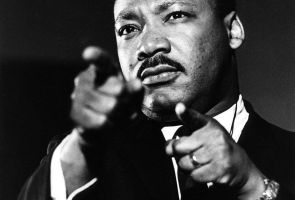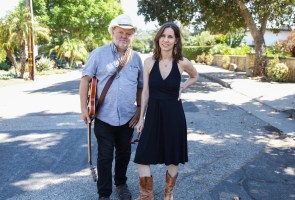Book Review | ‘The Freaks Came Out to Write: The Definitive History of The Village Voice, the Radical Paper That Changed American Culture’ by Tricia Romano
A Mostly Oral History of America’s Most Important Alternative Weekly Paper

What an artfully deejayed book Tricia Romano has spun for us, the (mostly) oral history The Freaks Came Out to Write: The Definitive History of The Village Voice, the Radical Paper That Changed American Culture (Public Affairs, 2024). This 571-page doorstop of a volume covers the full history of the Voice, from its founding by Dan Wolf, Ed Fancher, and Norman Mailer in 1955 to its demise in 2018. (The Voice rose back to online life in 2021, with occasional print editions, but you know how zombies are.) To tell the fractious tale, Romano — who wrote about New York nightlife for the paper — weaves together more than 200 interviews, digs up archival material from those already gone, and quotes clips from stories capturing landmark events like Stonewall, the AIDs crisis, and the rise of some nepo-baby scumbag real estate developer who was a jerk in 1979 even before the rest of the world got to (unfortunately) know him.
It’s easy to get lost in the cavalcade of great writers of the past 75 years, and for just a sample there’s Ellen Willis, Colson Whitehead, Leslie Savan, Robert Christgau, Susan Brownmiller, Michael Feingold, Stanley Crouch, Lisa Jones, Wayne Barrett, Barry Michael Cooper, C. Carr, Vince Aletti, Gary Giddins, Mary Perot Nichols, Lester Bangs, Greg Tate. Alas, this list leaves out cartoonists and photographers like Jules Feiffer and Sylvia Plachy. To keep all the players straight, Romano wisely provides a cast of characters (pun surely intended) to open the book. Or one can read for the dollops of gossip (only fitting as the Voice’s Michael Musto redefined that kind of column for a hip sensibility), as when Lucian K. Truscott IV, of all things a West Point cadet, crashes a Voice party with the following entrance: “I opened the door and I hit Mayor Lindsay on the elbow, and he spilled his drink on Bob Dylan.”
But what’s most powerful about the book is the case it makes for the Voice’s advocacy journalism goosing loose the notion that objectivity means presenting two sides to every story (note: we need to relearn this lesson again, right now). Founder Dan Wolf put it in a flip, if sly, way, saying, “We wanted to demolish the notion that one needs to be a professional to accomplish something.” Instead of being capital-J Journalists, the Voice welcomed people who actually did things. And then wrote. So pioneering experimental filmmaker Jonas Mekas was one of its first film critics. A writer who zinged the paper with a letter-to-the-editor one week might become a freelancer the next.
The paper also permitted some of the first uses of first person in journalism, in parallel with the New Journalism movement brewing elsewhere (see Tom Wolfe, Hunter S. Thompson, Joan Didion). “The danger of personal journalism is you end up talking about yourself,” is how trenchant feminist writer Vivian Gornick puts it. “I learned early that ‘I’ was an instrument of illumination. ‘I’ was not what it was about. It was to use myself to open up the subject and to interact with it…. A lot of that work was marred by amateurism, but a lot of it really made its mark.”
Those marks were in more fields than one can count, the staff were intersectionalists before that notion was cool or even a term. The Voice invented the Obies, elevating off-Broadway and growing the space for experimental theater. They fought for a feminism that “was free-thinking, undogmatic, culturally oriented, literary, and playful.” They made the case for renters’ rights, regularly lambasting the worst landlords in the city, and even spearheaded the first takedown of ugly urban planner Robert Moses. They advocated for gay rights, if not always as quickly as activists hoped. (They still ate The New York Times’ lunch on the issue — editor Abe Rosenthal refused to use the word “gay” in his paper into the 1980s.) Their cultural coverage illuminated music (from punk to a hip-hop nation cover one writer called “our 1619 Project”), film (Spike Lee was just one auteur rightfully recognized, so early in his career they wrote about his NYU thesis film), art (including the ground-breaking performance art of Karen Finley and the ensuing NEA fights), and clubbing (not shying away from when the scene turned sour with the murderous Michael Alig).
Even the slim sports pages were something in the Voice’s heyday, where writers got to be both more sympathetic to players, as they weren’t beholden to teams liking them day in and out like beat reporters were, and they could also respond more like very well-informed fans. “In the Wall Street Journal, you’re writing about the Yankees, the first reference would be ‘Derek Jeter,’” Allen St. John recalls. “And the second reference would be the very stilted ‘Mr. Jeter.’ If you were writing about Derek Jeter for the Village Voice, it would be ‘Derek Jeter,’ and the second reference would be ‘Mariah Carey–banging motherfucker.’”
This crazy crucible of energy and ego — as art critic Peter Schjeldahl says, “It was easier to write every week … you don’t let the power plant cool down” — led to all sorts of fights and even fisticuffs (Stanley Crouch finally got canned for being a bruiser). The feminists always had to struggle with the macho men (think Pete Hamill and Jimmy Breslin, even Nat Hentoff thanks to his anti-abortion absolutism), even at such a liberal paper.
Romano’s book, giving each person their chance to tell their story, thickens each plot into a complicated testament very much like the Village Voice itself. Its ornery, driven to depth and detail approach meant it accomplished many righteous things, from being one of the first papers to defend the Central Park Five to winning its third Pulitzer in 2000 for Mark Schoof — an openly gay reporter — writing an eight-part series about AIDS in Africa.
Sadly things couldn’t last. Classifieds were half the paper’s revenue, which meant the advent of Craigslist and its ilk was the first death blow. The rest of journalism, heck, even the Old Gray Lady the Voice loved to zing, began to catch up, to the point of hiring away its downtown rival’s writers. As Gary Dauphin puts it, “The notion of an alternative space where people did a certain kind of writing moved into the general cultural DNA.” And then the web made it seem everything is free now. At first the Voice pivoted well, creating a website that won a National Press Foundation award before MSNBC, CNN, National Geographic, and even The New York Times won that award, but the glory days were gone. If you figure out how to monetize old-school journalism, let us all know.
It’s easy for those of us of a certain age to tearily reminisce about the days when print journalism still meant something. On one hand, what you read shaped your worldview; on the other, your choices reflect who you really, really were better than wearing a band T-shirt. And the Voice helped inspire the launch of hundreds of alterna-weeklies — you’re soaking in one now. Of all things, the Independent’s current editor in chief held the same title at the Voice from 1976-1979, when of all people Rupert Murdoch, who then owned the Voice, let her go.
About that, the then-recently unionized paper (they were leaders in getting healthcare for same sex partners eventually too) threatened to walk out upon Murdoch’s decision. The rich man’s lawyers offered a huge settlement, to which Partridge said, “Oh my god, you have no idea what the Voice is. You don’t realize it’s practically a sacred duty to run it because of the people who work there.”
Who would have guessed the guy who would foist the abomination that is Fox News on the world night screw things up? For as Robert Christgau claims, “Marianne was the best editor the Voice ever had. People did not give her credit.”
Premier Events
Sun, Jan 12
11:00 AM
Santa Barbara,
Free 2nd Sunday for Tri-County Residents -Bilingual Storytime and Art Making for Children ages 3 – 5
Sun, Jan 12
12:00 PM
Santa Barbara,
Studio Sunday: Mixed-Media
Sun, Jan 12
2:00 PM
Santa Barbara
The Art of Ekphrastic Poetry Workshop with David Starkey
Sun, Jan 12
7:30 PM
Santa Barbara
“Goodbye Yellow Brick Road” – Elton John Album Performed
Mon, Jan 13
6:30 PM
Santa Barbara
Science Pub: “Less Charismatic” Animals
Tue, Jan 14
7:00 PM
Santa Barbara
Lucinda Lane Album-Release Show, at SOhO
Tue, Jan 14
7:30 PM
Santa Barbara
UCSB Arts & Lectures Presents: An Evening with Esther Perel
Wed, Jan 15
5:00 PM
Santa Barbara
Public Meeting Commenting on VSFB SpaceX Launches
Mon, Jan 20
All day
Santa Barbara
18th Annual Holiday Celebration for Martin Luther King, Jr.
Thu, Jan 30
8:00 PM
Solvang
Lucinda Lane Album-Release Show, at Lost Chord Guitars
Sun, Jan 12 11:00 AM
Santa Barbara,
Free 2nd Sunday for Tri-County Residents -Bilingual Storytime and Art Making for Children ages 3 – 5
Sun, Jan 12 12:00 PM
Santa Barbara,
Studio Sunday: Mixed-Media
Sun, Jan 12 2:00 PM
Santa Barbara
The Art of Ekphrastic Poetry Workshop with David Starkey
Sun, Jan 12 7:30 PM
Santa Barbara
“Goodbye Yellow Brick Road” – Elton John Album Performed
Mon, Jan 13 6:30 PM
Santa Barbara
Science Pub: “Less Charismatic” Animals
Tue, Jan 14 7:00 PM
Santa Barbara
Lucinda Lane Album-Release Show, at SOhO
Tue, Jan 14 7:30 PM
Santa Barbara
UCSB Arts & Lectures Presents: An Evening with Esther Perel
Wed, Jan 15 5:00 PM
Santa Barbara
Public Meeting Commenting on VSFB SpaceX Launches
Mon, Jan 20 All day
Santa Barbara
18th Annual Holiday Celebration for Martin Luther King, Jr.
Thu, Jan 30 8:00 PM
Solvang























You must be logged in to post a comment.